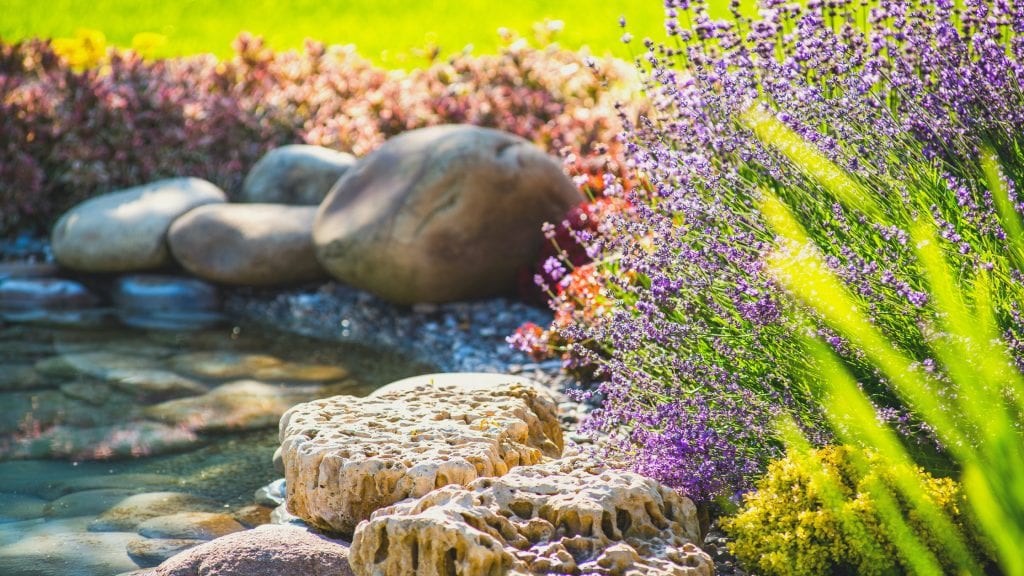
Planting a low-maintenance landscape will save you time and money. Integrating perennials, annuals, shrubs, and trees into your landscaping is key to upgrading your current landscape. They can provide unlimited options of colors, textures, and bloom time.
Before you can start planting assess your needs. Busy homeowners often find themselves short of time to complete landscaping work. Plants that need special attention or tending to may not be a good choice for your design needs.
Plants come in three categories: annuals, perennials, and biennials. They can provide unlimited options of color, texture, and bloom time. You can find this information on any plastic plant tag from your local garden center. What is clear when comparing annuals and perennials is that neither is superior to the other. They each have a job to do and are completely different from one another.
True annuals are plants that germinate, flower, set seed, and die all in one season. The goal of this plant is to flower until it says no more. Unfortunately, many people regret reading the plastic labels on plants when shopping. Thus, spending hundreds of dollars to find out their plants pass after a season. Then you find yourself, once again, at the garden center buying more plants in hopes they stay alive.
Annuals can give you great pops of color. But use few and far between throughout your landscape. If you don’t know their temperament, your landscaping quest can get rather expensive. Once again, pay attention to your labels as there are annuals that need lots of sun and those that can’t stand it. So know your space before you start planting.
WHEN TO PLANT ANNUALS INTO A LOW MAINTENANCE LANDSCAPE
Annuals can be a great way to take your gardening one year at a time. You can experiment with some great color schemes. Bottom line, annuals are cheap. They are perfect for filling in bare spots in already established gardens. Better yet, they are great for refreshing containers throughout the seasons.
Annuals attract pollinators. Plant annuals around veggie gardens. This increases edible crop production and decreases local wildlife. If you want a lot of blooms and splashes of color then annuals are the answer.
Perennials will return again year after year. Stuffing your yard with perennials is the best idea for a low maintenance landscape. When grown in favorable conditions perennials can live a very long life. They will wilt after their growing season but they will return to offer their blooms the next year. Thus, leaving you feeling as though you got your money’s worth at the garden center.
WHEN TO PLANT PERENIALS INTO A LOW MAINTENANCE LANDSCAPE?
Most perennials are easy to care for. Some need little upkeep. And, others that seem to thrive on neglect. At most, some perennials will need pruning and divided up if they outgrow their space. Yes, perennials can outgrow a space. But they are easy to propagate. Dig them up and split the root clumps into even more plants that you can put around your yard. They are the plant that keeps on giving. Perennials make the best low maintenance plants.
Spring is usually the best time to plant or propagate but it can also be successful in the fall. But, do it early enough. That way the new plants have a chance to establish their roots before the colder seasons.
Don’t confuse perennials with biennials. These plants take two years to complete their life cycle before dying. Usually biennials do not bloom until their second year. But there are some that will bloom their first year. Key here is they only have a two year lifespan and then you have to replace them with something new.
In conclusion, simplicity is key. The majority of your landscape should consist of shrubs and perennials. Trees, biennials, and annuals all play off one another. Pepper in areas to cover holes within your design. Arrange bright colored annuals around hardy perennials and small shrubs.
Make note of how your shrubs will change colors from season to season. Also consider easy to grow shrubs and trees. This creates a worry free foundation in your landscape. This will take your landscape to another level. You will develop a beautiful color palette that will look professional. You will have the best landscaping in your community and be the envy of your neighborhood.